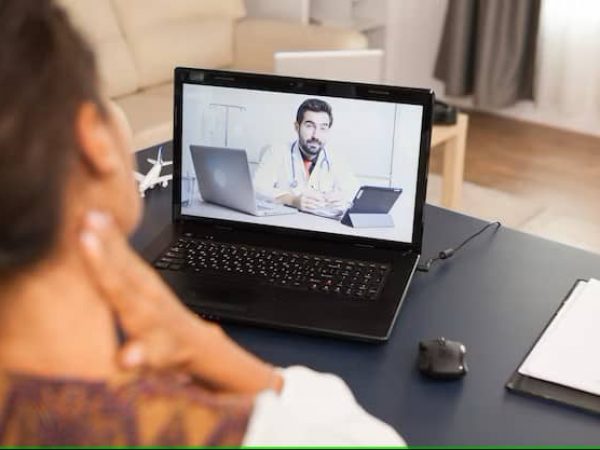
Emergency care is critical. Seconds can make the difference between life and death. Telehealth is helping save those precious seconds.
Telehealth connects patients and providers in real time. It uses video, audio, and digital tools to provide remote medical support.
In emergencies, telehealth enhances communication and speeds up decisions. It allows specialists to assess patients from anywhere instantly.
This technology is improving outcomes. It’s also reducing costs and pressure on crowded emergency rooms.
Triage is the first step in emergency care. Quick decisions are vital to prioritize the sickest patients first.
Telehealth tools allow nurses to triage patients remotely. This starts treatment planning before patients reach the hospital.
For ambulance crews, telehealth provides direct contact with ER doctors. Teams can share vitals, symptoms, and even live video.
That means faster, better-prepared care on arrival. It saves time and improves survival chances.
Rural hospitals often lack full emergency teams. They may not have specialists like neurologists or trauma surgeons available.
Telehealth connects rural doctors with specialists in real time. This “tele-consultation” supports accurate diagnoses and better treatment choices.
For example, stroke patients in rural areas can be evaluated quickly. Neurologists can recommend life-saving clot-busting medication.
These decisions are made fast—sometimes within minutes. That’s crucial for brain and heart emergencies.
Every second matters in a stroke or heart attack. Delays can cause permanent damage or death.
Telestroke programs connect hospitals to stroke experts 24/7. Patients are assessed immediately through a secure video link.
Experts guide local teams on diagnosis and treatment. This often includes administering tPA, a drug that dissolves blood clots.
Cardiac emergencies benefit too. Telecardiology offers expert insight into EKGs and symptoms remotely. This speeds up life-saving decisions.
ERs are often overcrowded, especially during flu season or pandemics. Telehealth helps manage the load efficiently.
Patients with less serious symptoms can use virtual ER visits. Doctors assess and treat patients through video calls.
This frees up beds for critical cases. It also keeps people out of crowded waiting rooms.
Tele-triage services can even direct people to urgent care instead of the ER. That reduces strain and improves care.
In natural disasters, telehealth keeps emergency care running. Storms, fires, or earthquakes can cut off hospital access.
Telehealth can connect mobile units to specialists. It also supports first responders with real-time guidance in the field.
During the COVID-19 pandemic, telehealth was vital. It protected doctors and patients from exposure while maintaining emergency services.
In public health crises, it can deliver mental health support quickly and safely to large populations.
Ambulances now use telehealth to send patient data on the way to hospitals. This includes EKGs, oxygen levels, and more.
Doctors at the hospital prepare before the patient even arrives. Life-saving tools and staff are ready immediately.
For air transport, telehealth supports in-flight care. Flight medics can consult with doctors in real time for complex needs.
This remote monitoring helps stabilize patients faster. It also allows better decision-making during transit.
Not all emergencies are true emergencies. Many people visit the ER when they could be treated elsewhere.
Telehealth helps patients decide the right care path. Virtual urgent care services provide fast consultations.
Doctors can reassure or redirect patients. They may prescribe medication or recommend follow-up with a primary doctor.
This reduces crowding, saves money, and improves care. Patients also avoid long waits and unnecessary stress.
Emergency staff face high-pressure situations daily. Telehealth provides backup and education when needed.
Doctors in small hospitals can consult senior specialists. Paramedics can access expert advice during difficult calls.
Telehealth also supports training. Simulated emergency scenarios can be conducted remotely to sharpen team skills.
This boosts confidence and improves real-world performance.
Many tools power telehealth in emergencies. High-speed internet, secure video platforms, and medical-grade tablets are essential.
Wearables and remote monitoring devices track heart rate, blood pressure, and more. This data feeds into live dashboards.
AI and machine learning are being added. These tools can detect patterns or alert doctors to urgent changes.
As technology advances, emergency telehealth will only get faster and smarter.
Telehealth in emergency care has barriers. Some areas lack strong internet or equipment. Others have concerns about privacy or reimbursement.
Hospitals are working to solve these issues. Government grants support rural telehealth programs. Laws are evolving to expand insurance coverage.
Training staff and educating patients is also key. The more familiar people are with telehealth, the better it works.
Telehealth is not a replacement for emergency rooms. It is a powerful partner in care.
By combining technology and expertise, it enhances speed, quality, and safety. It brings emergency care into the digital age.
Soon, virtual emergency rooms may become common. Patients will access rapid care from home, ambulances, or remote clinics.
It’s a future where geography won’t limit emergency response. Everyone, everywhere, can get expert care when it matters most.
Telehealth is transforming how we handle emergencies. It speeds up care, supports providers, and saves lives.
With continued growth, it will reshape emergency care for the better—making it faster, smarter, and more accessible than ever. Contact BlueStar today to learn more about how to make BlueStar’s patient monitoring solutions part of your health care strategy.